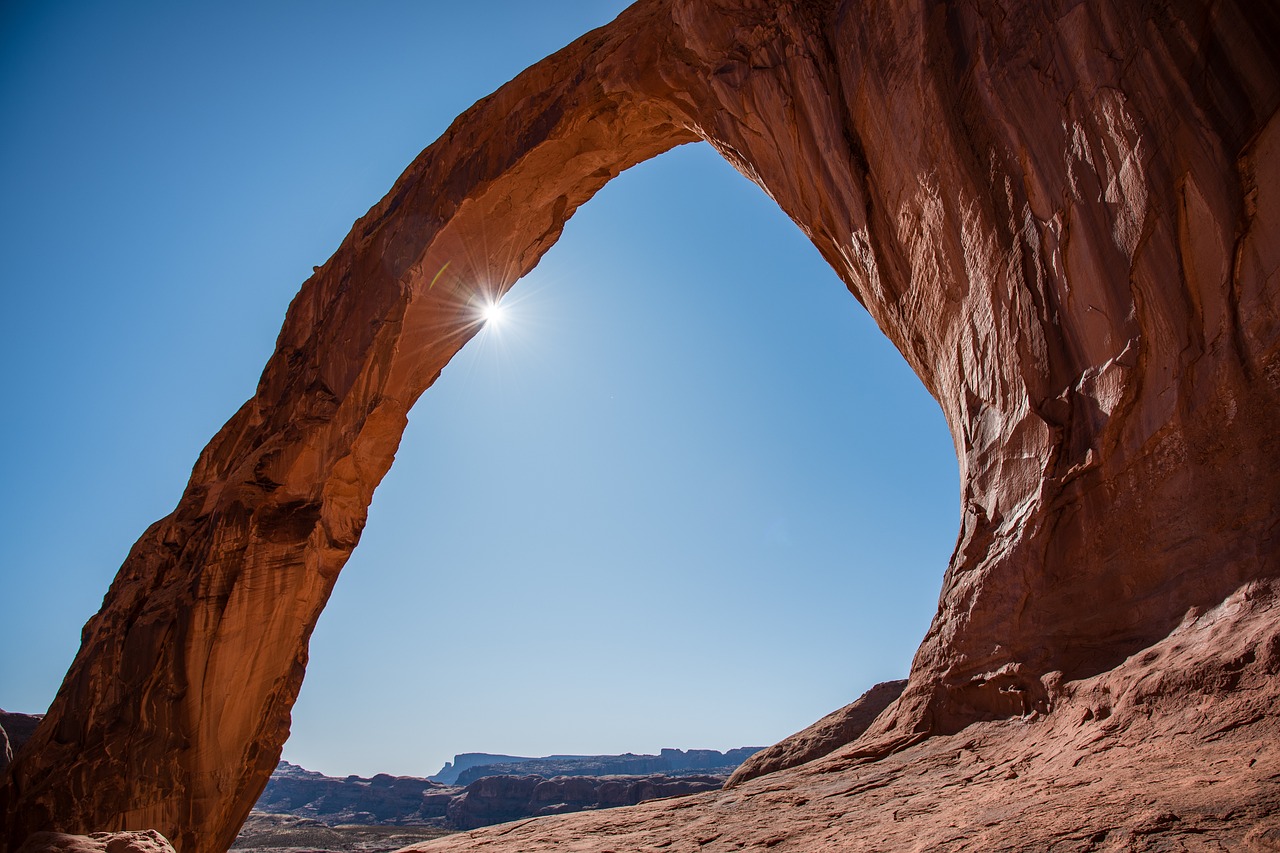Table of Contents
ToggleExploring the Corona Arch Trail Hike: Moab’s Hidden Gem
If you’re planning a visit to Moab, Utah, and want to experience some of the most scenic hikes in the region, the Corona Arch Trail should be at the top of your list. This relatively short but immensely rewarding hike offers stunning views, fascinating geology, and an up-close encounter with one of the most spectacular natural arches in the American Southwest. Let’s dive into everything you need to know about this hidden gem of a trail, from what to expect on this hike to tips for getting the most out of your adventure.
An Introduction to the Corona Arch Trail
Moab is famous for its red rock scenery, and while places like Arches National Park and Canyonlands National Park often steal the spotlight, the Corona Arch Trail is a lesser-known gem that deserves equal attention. Located just outside of Moab, this trail offers hikers a chance to see one of the most impressive natural arches in the area without the crowds that usually gather in national parks.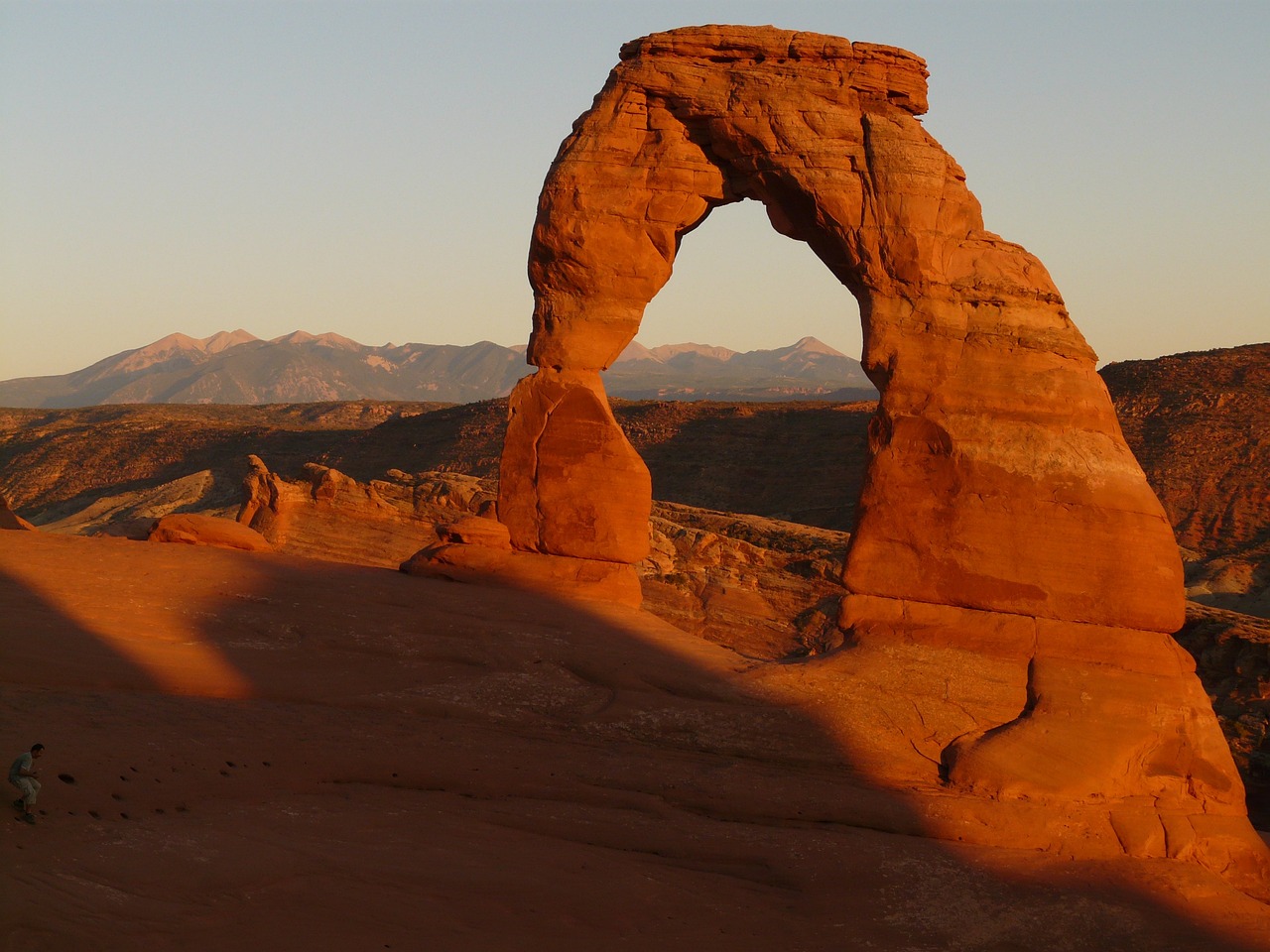
The Location and How to Get There
The Corona Arch is located approximately 10 miles west of Moab along the Potash Road (State Route 279). The drive itself is scenic, following the Colorado River and offering glimpses of towering cliffs and vast desert landscapes. The trailhead is well marked and has a small parking area where you can leave your car while hiking.
Directions from Moab
From downtown Moab, take US Highway 191 north until you reach the junction with Potash Road (State Route 279). Turn left onto Potash Road and continue for approximately 10 miles. The trailhead will be on your right, marked by a sign indicating the start of the Corona Arch Trail.
The Trailhead and What to Expect
The Corona Arch Trail is a 3-mile round-trip hike that takes you through some of the most spectacular desert scenery in the area. The trail is well maintained and easy to follow, making it suitable for hikers of all skill levels. However, there are some parts that require a little scrambling, so be prepared for a little adventure.
Trailhead Amenities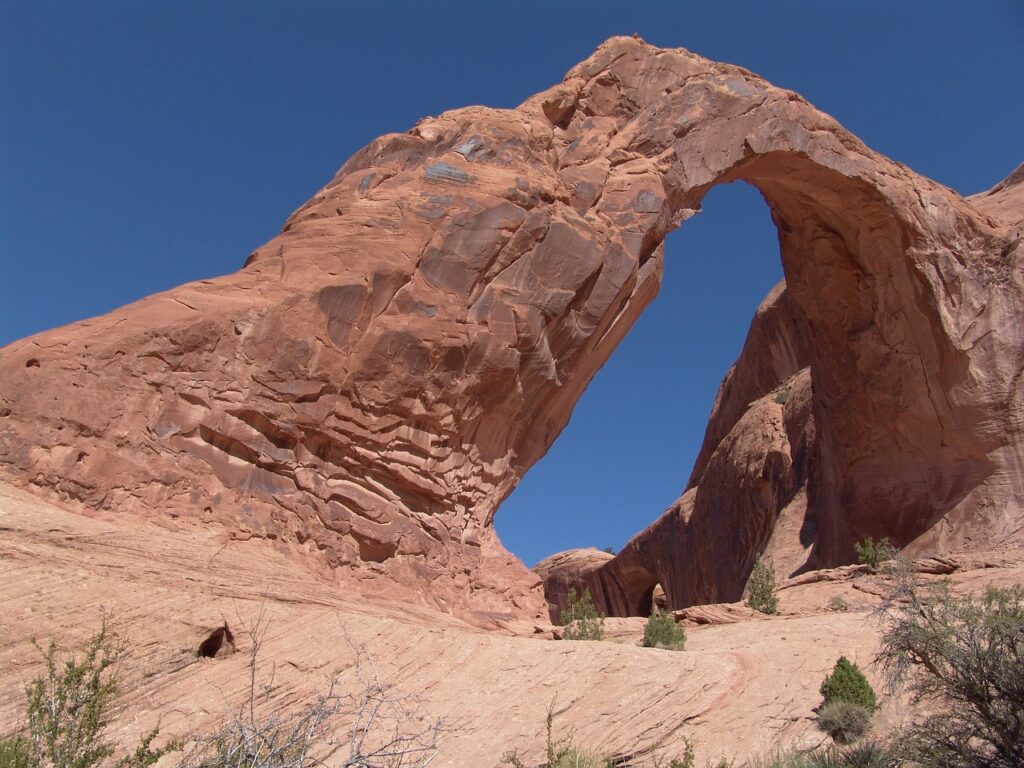
The trailhead offers basic amenities, including a small parking lot and informational signs about the trail and surrounding area. There are no restrooms or water sources, so be sure to come prepared with plenty of water, especially if you’re hiking in the warmer months.
Hiking the Corona Arch Trail
The trip to Corona Arch is relatively short but full of incredible views and interesting terrain. Here’s a breakdown of what you can expect along the way.
First Section: A Gentle Beginning
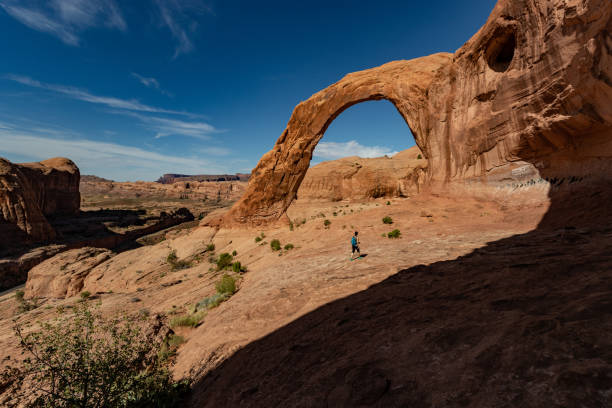
The trail begins with a gentle climb through a wide valley. The route is well marked and easy to follow, making it a great introduction to hiking. As you hit the trail, you’ll pass breathtaking rock formations and get your first glimpse of the desert landscape that surrounds Moab.
The Second Section: Scrambling and Cable Assist
After about a mile, the trail starts to get a little more difficult. You will encounter a section of slickrock where the trail becomes less defined. To help hikers navigate the area, metal wires are embedded in the rock for support. This section is not too difficult, but it does require a bit of scrambling, so take your time and enjoy the unique experience of climbing Slickrock.
The Final Stretch: Approaching Corona Arch
As you reach the end of the trail, the Corona Arch comes into view, and it is truly a sight to behold. The arch is huge, measuring 140 feet and 105 feet high, making it one of the largest natural arches in the region. The trail takes you to the base of the arch, where you can take in amazing views and appreciate the natural beauty of this incredible formation.
The Best Time to Hike Corona Arch
The Corona Arch Trail can be hiked year-round, but the best time to visit is during spring and fall when temperatures are cooler. Summer can be extremely hot, with temperatures often exceeding 100°F (38°C), so if you plan to hike during this time, start early and bring plenty of water. .
Spring Hiking
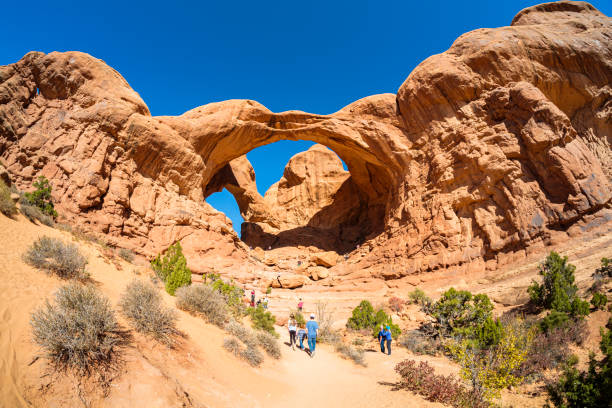
Spring is one of the most popular times to hike Corona Arch, as the weather is mild, and the desert wildflowers are blooming. The cooler temperatures make the trip more enjoyable, and the vibrant colors of the blooming flowers add an extra layer of beauty to the already stunning scenery.
Fall Hiking
Fall is another great time to hike, with cooler temperatures and fewer crowds. The changing colors of the desert vegetation create a beautiful backdrop for your journey, and the crisp air makes for a refreshing adventure.
Winter Hiking
Although winter is the least popular time to hike due to the cold temperatures, it can be a peaceful and relaxing experience. Be sure to check the weather forecast and trail conditions before you set off, as snow and ice can make the trail more difficult.
What to Bring on Your Hike
To ensure a safe and enjoyable trip, it’s important to be prepared. Here is a list of essential items to bring with you on the Corona Arch Trail:
Water
The most important thing to bring is plenty of water. The desert environment can be harsh, and it’s easy to become dehydrated, especially in the hot months. Plan to bring at least 2 liters of water per person.
Sun protection
The sun can be intense in Moab, so be sure to wear sun protection, including a wide-brimmed hat, sunglasses, and sunscreen. There is little shade on the trail, so it is important to protect yourself from the sun’s rays.
Sturdy shoes
The trail includes sections of slickrock and rough terrain, so sturdy shoes with good traction are essential. Hiking boots or trail shoes are recommended.
Snacks
Bring along some snacks to keep your energy levels up during the hike. Trail mix, energy bars, and fruit are all great options.
Camera
The views along the Corona Arch Trail are incredible, so don’t forget to bring a camera to capture the breathtaking scenery. Whether you’re a professional photographer or just using your smartphone, you’ll want to document your adventure.
The Geological Wonders of Corona Arch
One of the most interesting aspects of the Corona Arch Trail is the opportunity to see the unique geology of the area up close. The arch itself is a stunning example of natural erosion, carved out of the Entrada Sandstone by wind and water over millions of years.
The Formation of Corona Arch
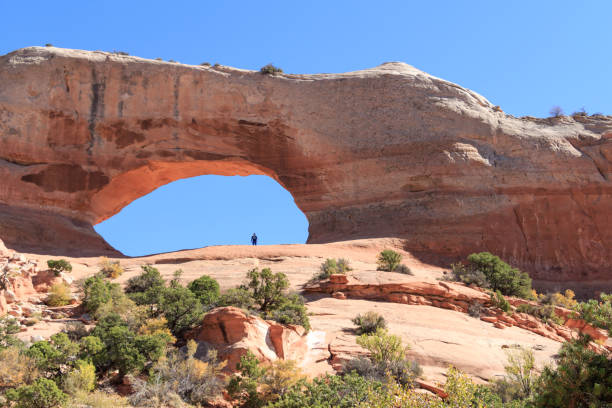
The Corona Arch was formed by a process known as erosion, where wind and water slowly wear away rock over time, creating the massive arches we see today. The arch is made of Entrada sandstone, a type of rock that is particularly susceptible to erosion, making it a prime candidate for the formation of natural arches.
Other Geological Features
In addition to the Corona Arch, the trail offers views of other interesting geologic features, including towering cliffs, siltrock formations, and ancient rock layers that tell the story of the region’s geologic history.
Safety Tips for Hiking Corona Arch
While the Corona Arch Trail is relatively easy, it’s important to keep safety in mind during your hike. Here are some tips to ensure a safe and enjoyable adventure:
Stay on the Trail
It is important to stay on the designated trail and avoid getting lost to protect the fragile desert environment. The trail is well marked, so be sure to follow the cairns (piles of small rocks) and signs along the way.
Be Prepared for Scrambling
The section of the trail with the cable assist requires a bit of scrambling, so be prepared for some hands-on climbing. Take your time and use the cables for support to ensure a safe ascent.
Watch for Weather
The weather can change in Moab can change Quick, so it’s important to keep an eye on the forecast and be prepared for sudden changes. If rain is likely, consider postponing your hike, as slickrock can become slippery and dangerous when wet. Additionally, avoid hiking during thunderstorms, as lightning can be a serious hazard in exposed areas.
Bring a First Aid Kit
Accidents can happen, especially on a trail that includes some bumps. It’s a good idea to carry a small first aid kit with band-aids, antiseptic wipes, and other essentials you might need in case of minor injuries.
Hike with a Buddy

If possible, hike with a friend or in a group. Not only is it more fun, it’s also safer. If you hike alone, be sure to let someone know your plans and when you expect to return.
Other Points of Interest Nearby
If you have extra time after your hike, there are several other points of interest near Corona Arch that are worth checking out.
Bowtie Arch
Just before reaching Corona Arch, you will pass by Booty Arch, another interesting geological feature. This small arch is less well-known but just as impressive, given its unique shape and location on the edge of a cliff. It’s worth taking a few minutes to explore the area before continuing to Corona Arch.
Potash Road Petroglyphs
Along the Potash Road, at or on your way to the trailhead, you’ll find several rock panels decorated with ancient petroglyphs. These petroglyphs were created by Native Americans hundreds, if not thousands, of years ago and offer a glimpse into the region’s rich cultural history. Be sure to stop by and take a look at these incredible works of rock-carved art.
Dead Horse Point State Park
A short drive from the Corona Arch Trailhead, Dead Horse Point State Park offers some of the most breathtaking views in the region. The overlook of the park offers a beautiful view of the Colorado River as it flows through the canyonlands below, making it a great place for photography and viewing the beauty of the landscape.
Conclusion:
The Corona Arch Trail is truly one of Moab’s hidden gems. With its relatively short distance, spectacular scenery, and the stunning beauty of Corona Arch itself, this hike offers a rewarding adventure for hikers of all skill levels. Whether you’re an experienced hiker or just looking for a family-friendly trail with incredible views, the Corona Arch Trail provides an unforgettable experience.
From the fascinating geology and ancient history to the sheer size and beauty of the Corona Arch, this hike is a great way to experience the magic of Moab’s red rock country. So lace up your hiking boots, grab your camera, and get ready to explore one of Utah’s most impressive natural wonders.
More Hiking Guides and tours:
Thanks for looking! I hope you enjoyed this guide for visiting ,
Don’t forget to check out my other travel guides and tours before your trip!
FAQs
How long does it take to hike the Corona Arch Trail?
The hike typically takes about 2 to 3 hours round trip, depending on your pace and how much time you spend at the arch.
Is the Corona Arch Trail suitable for children?
Yes, the trail is suitable for children, though younger kids may need assistance with the scrambling sections. Always supervise children closely, especially near the arch.
Can I bring my dog on the Corona Arch Trail?
Yes, dogs are allowed on the trail, but they must be kept on a leash at all times. Be sure to bring plenty of water for your pet, as there are no water sources on the trail.

